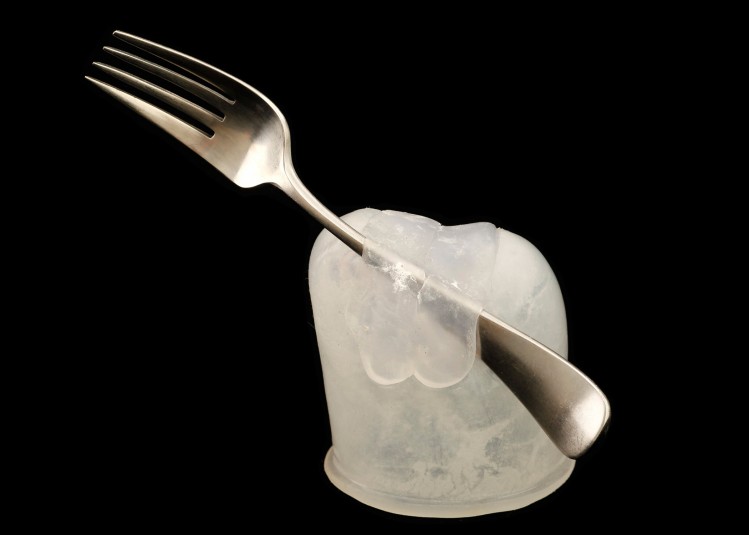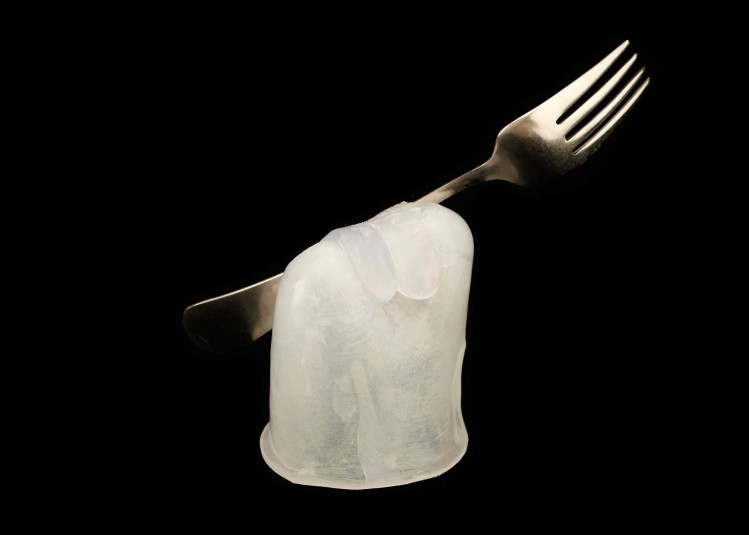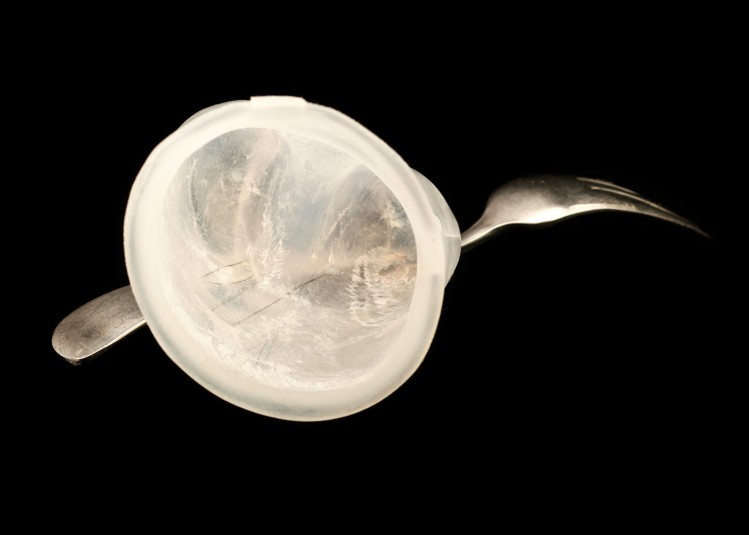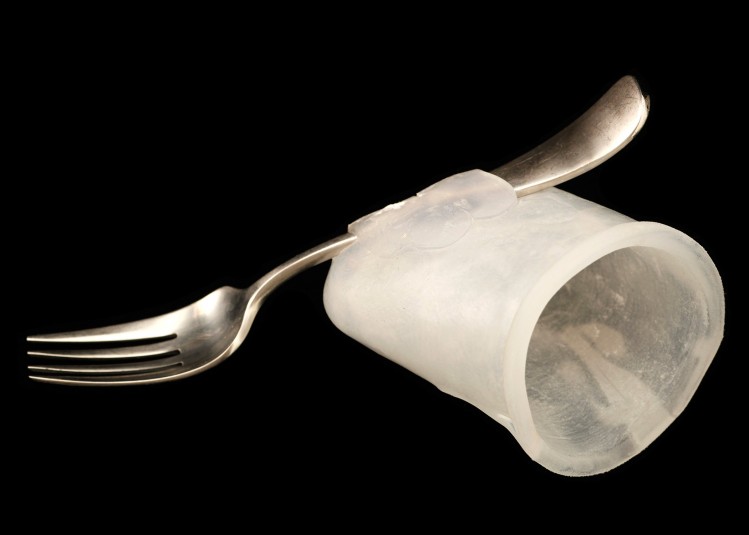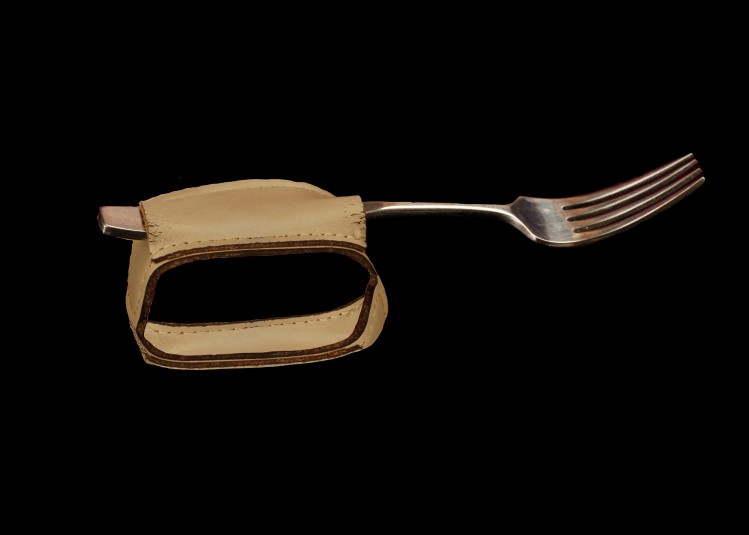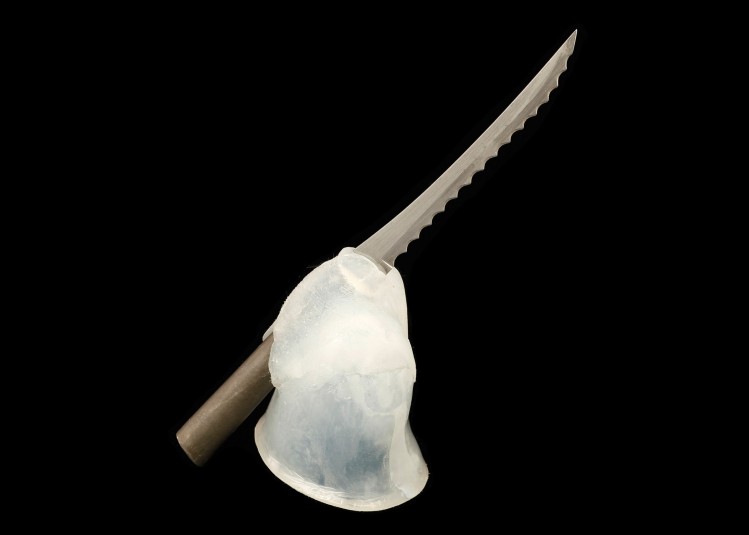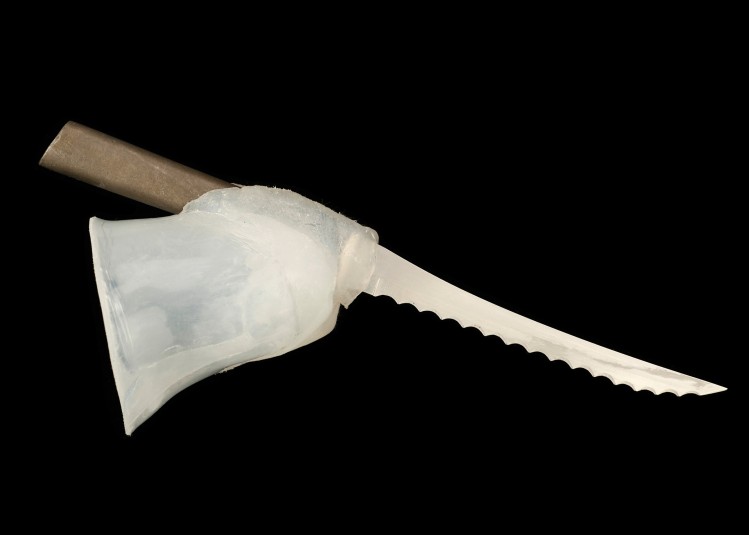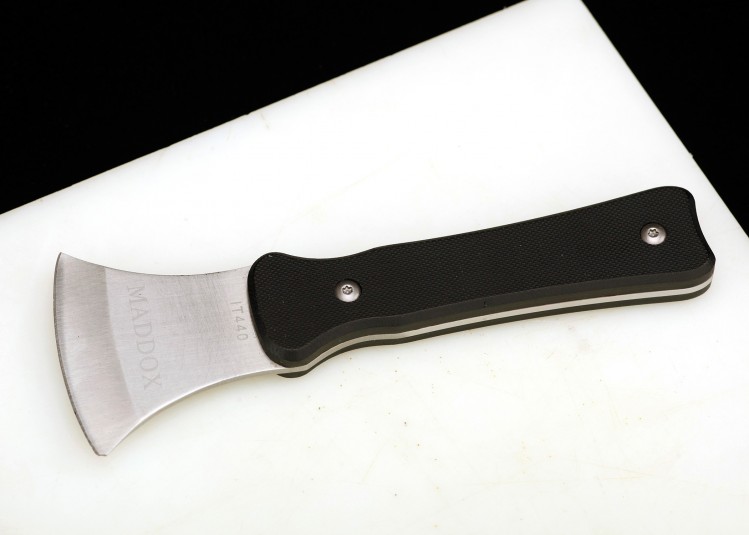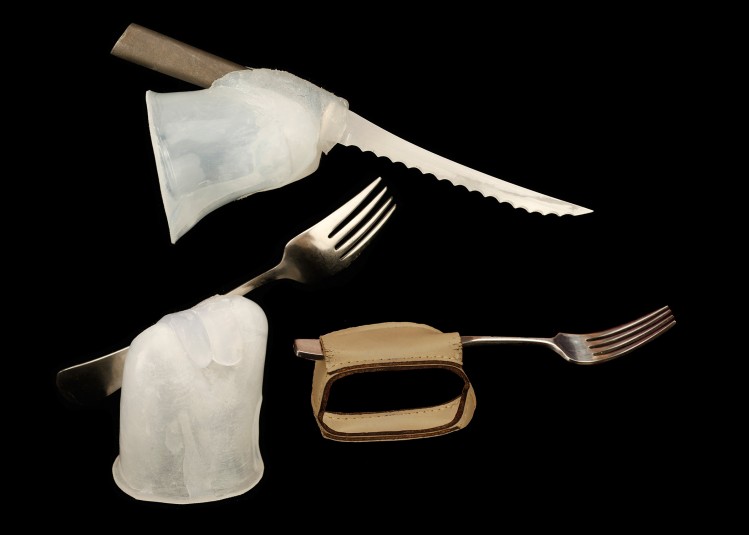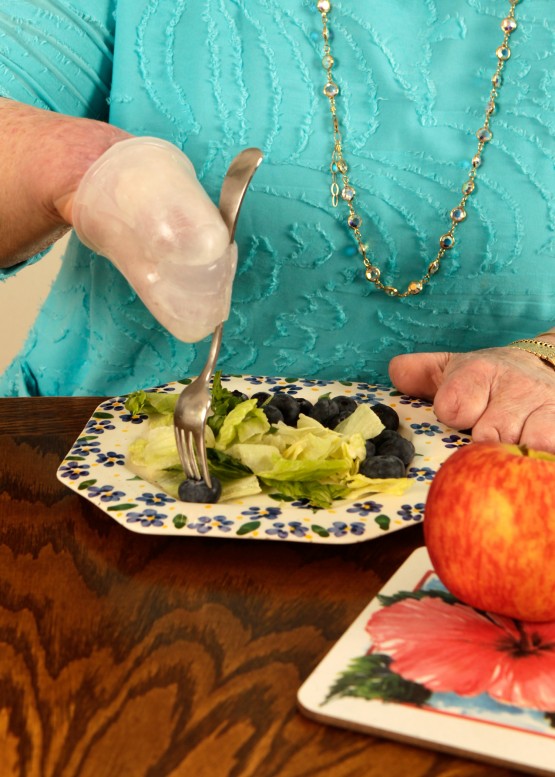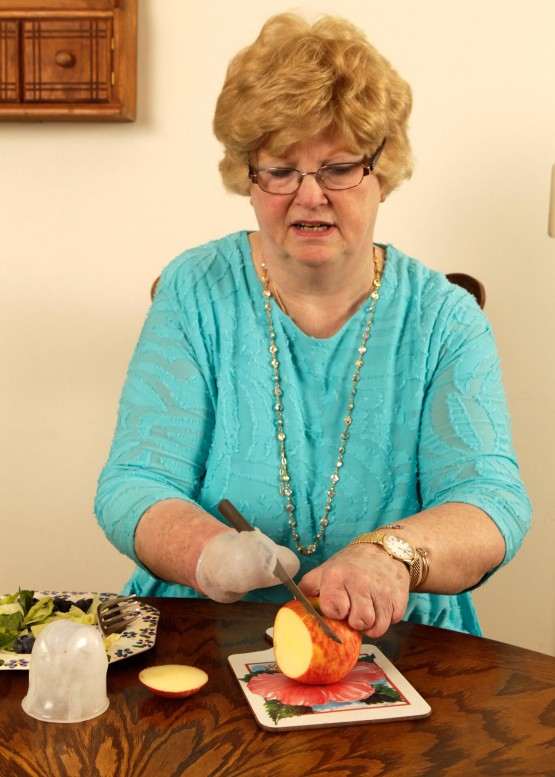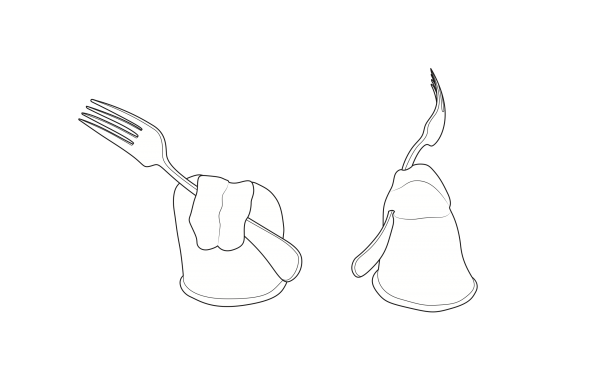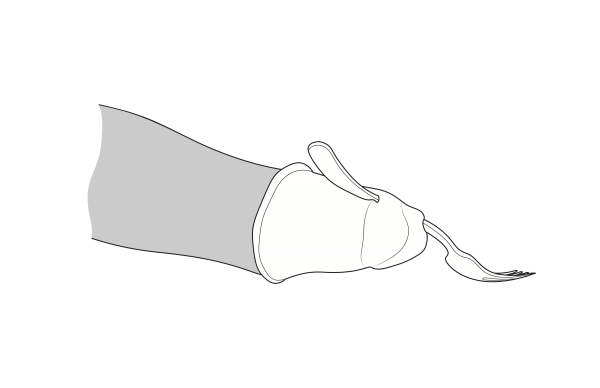Eating Tools
Cindy amassed a clever set of tools that would allow her to self-feed, even in restaurants
Description
After Cindy’s success with the pen holder, she started to think about other situations where a precise hand movement would be desirable. Take eating, for example. Once she was physically adjusted to her below-knee prosthetics and healthy enough to focus on more than day-to-day survival, Cindy amassed a clever set of tools that would allow her to self-feed, even in restaurants. A leather cuff, fitted with a pocket and attached via an adjustable velcro band (or another version with a leather pocket on an elastic cuff), would brace a standard fork at an angle roughly perpendicular to her hand; a small set of tongs would allow her to pinch and grasp things like salads; and an adaptive rocker knife would allow her to cut precisely. She especially loves the rocker knife: she can use it with one handed, it’s sharp, “and it does the job nicely.”
Once she had the pen holder, however, she saw how a rigid tool could be fixed at a singular angle and mimic the way a fork or knife is intended for use in a hand with normative fingers. If she could get the fork lodged in silicone too, she could both spear and scoop her food in much the same way as she’d done in the past. A knife positioned precisely would allow her to exploit its sawing motion. She went back to Greig and Henry at United Prosthetics, and they fashioned for her a fork and a sharp knife all for pennies in material costs.
Self-feeding was one of the acts Cindy wanted to take back for herself. She’s at peace with asking for significant help now, but she doesn't need it as much as she did at first. Today she can don her two legs in the morning, stand from sitting, dress (except for buttons and zippers), cook, drive, and so much more. Still—she has had to work hard to reclaim some acts of self care. Perhaps especially in public, where she attracts all kinds of assistance, both wanted and unwanted, it’s significant for her to have tools adapted for some independence. Prosthetics are functional tools, naturally. But these adapted utensils make them tools for public “performance,” too. To feed herself is to keep at bay the forms of assistance that too often mistakenly render her passive in public.
